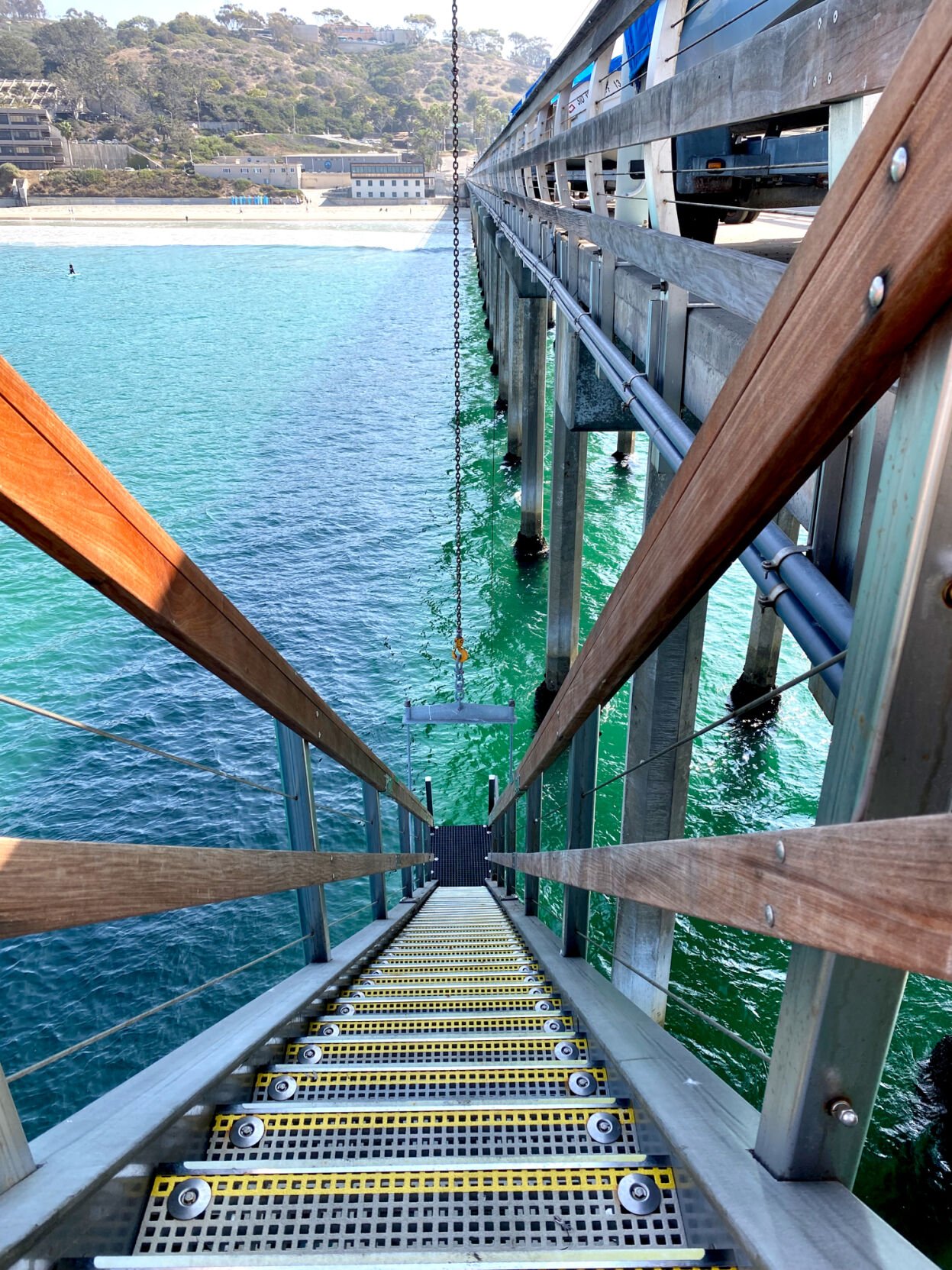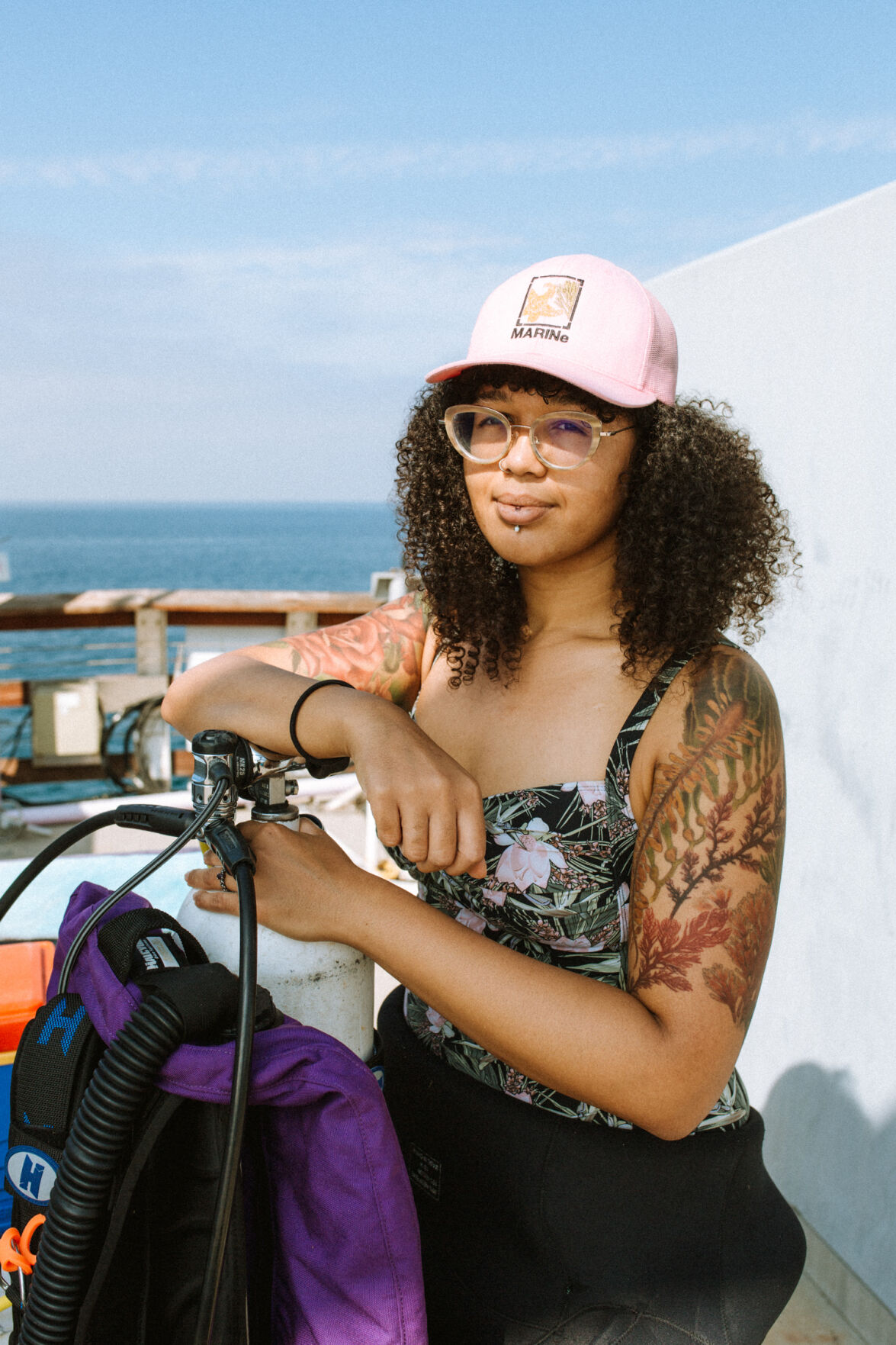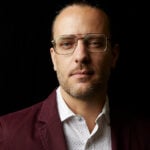
E.B. Scripps Memorial Pier
Photo Credit: Mateo Hoke
You can’t fight the tide, but you can study it. Data makes the scientific world go round. Around here, there is no better place for oceanographic research than E.B. Scripps Memorial Pier. Oceanographers have been tracking Pacific Ocean surface temps here since 1916 when the pier was built—longer than anywhere else in the world. Replaced in 1988, it’s one of the largest research piers in the world. But there’s no cotton candy for sale or wind-beaten anglers reeling in a catch up here. The waters surrounding the pier are a marine protected zone, and a foreboding metal gate keeps the public out so the scientists can work in peace.
One of these scientists is Dani McHaskell, a seaweed-tattooed 30-year-old PhD student and certified algae aficionado. She studies how nonnative seaweed species might be impacting the local community of flora and fauna.
“I loooove seaweeds, they’re so cool,” she joyously hollers when asked about her passion. “I love the morphology of how they look, I love how they taste.”

E.B. Scripps Memorial Pier, danielle
Photo Credit: Matthew Moisant
She’s on the pier, wet-suiting up with air tanks, fins, weights, and underwater cleaning supplies to help perform maintenance on a sensor that has measured oceanic oxygen and pH levels for a decade. Sure, the cleaning duties might sometimes fall under grad student grunt work, but it’s imperative. The sensor is crucial to understanding how rising CO2 levels impact the Pacific and the creatures who call it home.
See, the ocean absorbs carbon, which causes acidification. This is a big problem because critters that use calcium to make their bodies—like, you know, most foundational species including shellfish, coral, plankton, and even some fish—have a harder time growing in an acidic ocean.
So a low pH may mean big trouble for the creatures that build the aquatic web of life, including McHaskell’s beloved underwater weeds.
“The tattoo is my dedication to seaweed and to my research that I plan to focus on for the rest of my life,” she says. “It’s a promise to myself and to the ecosystem that I’m going to do my best to support it.”



















